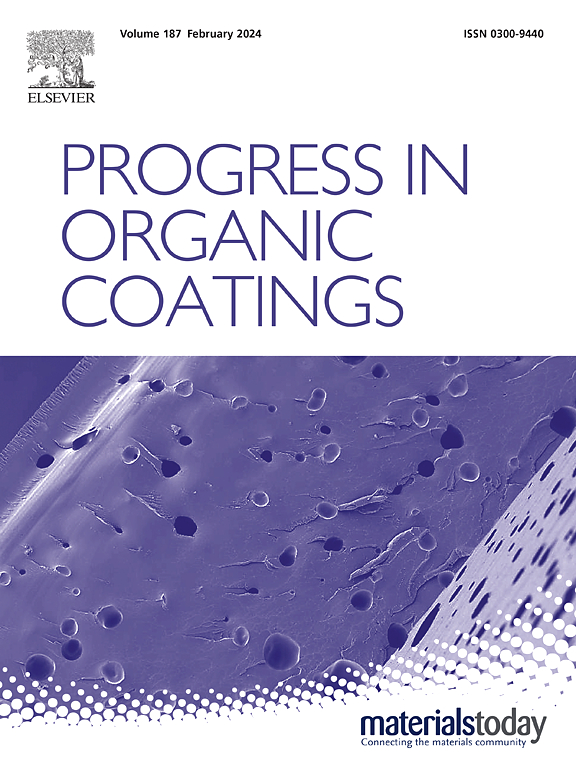Amphiphilic fluorinated polynorbornene/silicone-based polyurea dual-network organogels with mechanical robustness, self-healing and anti-icing capability
IF 6.5
2区 材料科学
Q1 CHEMISTRY, APPLIED
引用次数: 0
Abstract
The development of mechanically durable ice-phobic organogels with low ice adhesion, mechanical robustness, and low-temperature self-healing capabilities has proven to be both challenging and valuable. In this study, we present organogels (ANDFG/PDUS) with varying dimethyl silicone oil contents (0–80 wt%), which are based on a dual-network structure comprising amphiphilic fluorinated polynorbornene (ANDFG) and silicone-based polyurea (PDUS). The ANDFG network was well-designed through ring-opening metathesis polymerization (ROMP), employing norbornenyl decafluoroheptyl ester (NDF) and norbornenyl pyrrolidone ester (NHP) as monomers, and norbornenyl dinorbornene isophorone diisocyanate cyanide ester (NIPDI) as the cross-linking agent. Additionally, a polyaddition process involving isophorone diisocyanate, aminopropyl-terminated polydimethylsiloxane, and 2-aminophenyl disulfide as monomers was used to produce a PDUS network characterized by dynamic disulfide bonds. The mechanical behavior, anti-icing properties, and self-healing capabilities of the ANDFG/PDUS organogels were comprehensively investigated. The tensile strength (0.66–1.91 MPa) can be effectively tuned by adjusting the mass fractions of the silicone oil, benefiting from the well-designed dual networks and the synergistic strengthening of molecular interactions, including hydrogen and disulfide bonds. Notably, all organogels demonstrated a self-healing efficiency >90 % within 6 h at 30 °C, attributed to the reversible dissociation and reconnection of dynamic disulfide and hydrogen bonding interactions within the crosslinked networks. Furthermore, the ANDFG/PDUS-4 organogels, with 80 % silicone oil content, exhibited a high mechanical strength of 0.66 MPa and outstanding anti-icing performance, maintaining a low ice shear strength of 8.84 kPa at −20 °C, which remained below 15 kPa even after 25 icing-deicing cycles. This effective anti-icing behavior can be attributed to the synergistic effects of the low surface energy and hydrophobic properties of the norbornene decafluoroheptyl ester chain segments, along with the lubricating layers of silicone oil and hydration layer formed by the hydrophilic pyrrolidone chain segments that interacts with water through hydrogen bonds. This study provides a promising approach for the convenient development of low-temperature self-healing anti-icing materials with high mechanical durability.

求助全文
约1分钟内获得全文
求助全文
来源期刊

Progress in Organic Coatings
工程技术-材料科学:膜
CiteScore
11.40
自引率
15.20%
发文量
577
审稿时长
48 days
期刊介绍:
The aim of this international journal is to analyse and publicise the progress and current state of knowledge in the field of organic coatings and related materials. The Editors and the Editorial Board members will solicit both review and research papers from academic and industrial scientists who are actively engaged in research and development or, in the case of review papers, have extensive experience in the subject to be reviewed. Unsolicited manuscripts will be accepted if they meet the journal''s requirements. The journal publishes papers dealing with such subjects as:
• Chemical, physical and technological properties of organic coatings and related materials
• Problems and methods of preparation, manufacture and application of these materials
• Performance, testing and analysis.
 求助内容:
求助内容: 应助结果提醒方式:
应助结果提醒方式:


